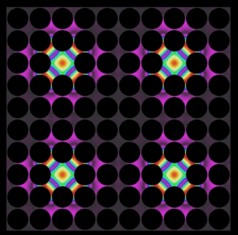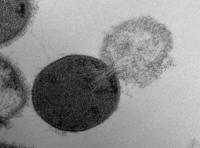Science
A hidden treasure in the Large Magellanic Cloud

Nearly 200 000 light-years from Earth, the Large Magellanic Cloud, a satellite galaxy of the Milky Way, floats in space, in a long and slow dance around our galaxy. Vast clouds of gas within it slowly collapse to form new stars. In turn, these light up the gas clouds in a riot of colours, visible in this image from the NASA/ESA Hubble Space Telescope.
- Read more
- 380 reads
Heliatek consolidates its technology leadership by establishing a new world record for organic solar technology with a cell efficiency of 12%

The 12.0% record cell on a standard size of 1.1 cm² combines two patented absorber materials, which convert light of different wavelengths. Using two different absorber materials creates a stronger absorption of photons and improves energetic utilization through a higher photovoltage.Thanks to OPV's unique behavior at high temperatures and low light conditions, this 12% efficiency is comparable to about 14% to 15% efficiency for traditional solar technologies like crystalline silicon and thin film PV. Whereas those technologies significantly lose cell efficiency with rising temperatures and decreasing solar irradiation, organic cells increase their efficiency in these conditions leading to a much higher energy harvesting in real life environments.
- Read more
- 338 reads
Mathematical breakthrough sets out rules for more effective teleportation: New protocol advances solutions for more efficient teleportation - the transport of quantum information at the speed of light

Now, for the first time, researchers have worked out how entanglement could be 'recycled' to increase the efficiency of these connections.
- Read more
- 347 reads
Hubble Views a Dwarf Galaxy
The constellation of Ursa Major (The Great Bear) is home to Messier 101, the Pinwheel Galaxy. Messier 101 is one of the biggest and brightest spiral galaxies in the night sky. Like the Milky Way, Messier 101 is not alone, with smaller dwarf galaxies in its neighborhood.
- Read more
- 351 reads
Chips that can steer light: Record-setting ‘optical phased arrays’ could lead to better laser rangefinders, smaller medical-imaging devices and even holographic TVs

Another possibility, however, is to create an array of light emitters and vary their "phase" — the alignment of the light waves they produce. The out-of-phase light waves interfere with one another, reinforcing each other in some directions but annihilating each other in others. The result is a light source that doesn't move, but can project a beam in any direction.
- Read more
- 363 reads
How to treat heat like light: New approach using nanoparticle alloys allows heat to be focused or reflected just like electromagnetic waves

The approach relies on engineered materials consisting of nanostructured semiconductor alloy crystals. Heat is a vibration of matter — technically, a vibration of the atomic lattice of a material — just as sound is. Such vibrations can also be thought of as a stream of phonons — a kind of "virtual particle" that is analogous to the photons that carry light. The new approach is similar to recently developed photonic crystals that can control the passage of light, and phononic crystals that can do the same for sound.
- Read more
- 326 reads
Study quantifies the size of holes antibacterials create in cell walls to kill bacteria: Death on a nanometer scale

Research has shown that alternative antimicrobials such as PlyC can effectively kill bacteria. However, fundamental questions remain about how bacteria respond to the holes that these therapeutics make in their cell wall and what size holes bacteria can withstand before breaking apart. Answering those questions could improve the effectiveness of current antibacterial drugs and initiate the development of new ones.
- Read more
- 349 reads
Wavelength-Dependent Shapeshifting: Plasmon-Mediated Growth Control

Methods which allow predictable and reproducible control over the shape and defect structures of nanoparticles are a sought-after ideal in research on nanoparticle synthesis. Realising this ideal for silver nanoparticles is one step closer with the discovery that the localised surface plasmon resonance feature observed for nanoscale metals - the collective oscillation of their electrons caused by incident light - can be used to predictably direct the growth of silver nanocrystals.
- Read more
- 393 reads
NASA Rules Out Earth Impact in 2036 for Asteroid Apophis

Asteroid Apophis was discovered on June 19, 2004.
- Read more
- 361 reads
NASA's GALEX Reveals the Largest-Known Spiral Galaxy
The spectacular barred spiral galaxy NGC 6872 has ranked among the biggest stellar systems for decades. Now a team of astronomers from the United States, Chile and Brazil has crowned it the largest known spiral, based on archival data from NASA's Galaxy Evolution Explorer (GALEX) mission, which has since been loaned to the California Institute of Technology in Pasadena.
- Read more
- 347 reads
Human Rights
Fostering a More Humane World: The 28th Eurasian Economic Summi

Conscience, Hope, and Action: Keys to Global Peace and Sustainability

Ringing FOWPAL’s Peace Bell for the World:Nobel Peace Prize Laureates’ Visions and Actions

Protecting the World’s Cultural Diversity for a Sustainable Future

Puppet Show I International Friendship Day 2020

